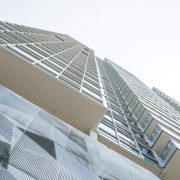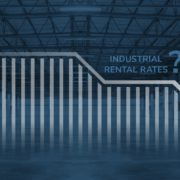Beware of Maturing Debt
If you have been following the financial news lately, you have likely been bombarded with reports about the banking sector. The high profile meltdowns of Silicon Valley Bank and Signature Bank, two of the biggest regional banks in the country, brought to light some of the risks associated with our fractional reserve banking system. These two banks in particular were exposed to interest rate risk precipitated by the Fed’s rate hikes over the past year. As deposits poured into their coffers as a result of profligate government stimulus programs, they could not loan out the money to their customers fast enough to put all that cash to work. So, they poured a disproportionate amount of that money into long term US Treasury Bonds and mortgage-backed securities at yields that were good at the time.
However, those investments lost value as yields on new debt in those asset classes rose. When Silicon Valley Bank took a huge loss on the sale of a tranche of those bonds to raise cash, the problem was exposed to the light. A run ensued and the bank was taken over by the FDIC. Signature went down for the same reason just hours later. Both banks had designated these assets as hold-to-maturity to avoid marking them down to market value. If not for their customers’ panic withdrawal of a massive amount of uninsured deposits, they might have gotten away with it.
Alas, that was not to be and all eyes turned to other regional banks who were exposed to similar risks. Think First Republic Bank and others in that tier of the nation’s banks, many of whom have significant exposure to a huge pile of maturing debt in the commercial real estate sector, which includes the office, industrial, retail, hospitality and public storage product types. In this post we focus on the office sector, which is the most at risk due to rising vacancy and softening rent growth across the country. San Diego’s office market is faring better than most markets in this regard, but will still be subject to higher interest rates and stricter underwriting criteria when remaining loan balances are called and need to be refinanced.
If you have debt on an office property in San Diego that was originated eight to ten years ago, chances are you are subject to a call on the loan and you will soon be forced to find a new loan to take out your current balance. If your payments are based on a 25 year amortization schedule, your loan balance is still over 70% of what you borrowed at a rate in the 3% to 4% range back in the good ‘ol days. At current mortgage interest rates and with stricter underwriting metrics, the cost to service your debt will likely be double what it is today. If your vacancy level has gone up due to softening market conditions, it further complicates the scenario because loan amounts for conventional office property loans are calculated using a debt service coverage ratio applied to the current net operating income, usually in the 1.2 to 1.3 range. Thus, the combination of higher interest rates and lower occupancy levels erodes borrowing power, perhaps to the point that you may not be able to borrow enough to pay off your existing loan.
If you find yourself in this position as many office property owners are, what should you do? First; talk to your lender now! Find out what they are willing to do to solve the problem that you both face together. Your bank does not want to become the owner of your property, as they are under extreme pressure to keep their loans in the performing category to avoid having to hold additional capital in reserve against loans that may not be paid back due to deteriorating conditions.
Second; focus on increasing net operating income by filling current vacancies, as every dollar in additional net operating income will enhance borrowing power. That may mean lowering asking lease rates, increasing concessions, improving the property with additional amenities to attract tenants or some combination thereof. Your unique circumstances will determine the feasibility of this approach. Third; evaluate all your options immediately, including the possibility of a sale or exchange of your property into another asset that will reduce your exposure to higher risk, rather than holding it through a market correction of unknown breadth and depth. Clearly, the office market bull-run of the past decade is behind us and re-thinking your investment strategy based on that reality is in your best interests. You will have to decide what is best for you based on your property’s current performance and your prospects for future revenue enhancement and a potential refinance opportunity. The sooner you take action, the better your chances are for a favorable outcome, as current conditions are not likely to improve by the time your current loan is called. Your Voit professional has the experience, tools and resources to assist you in this effort.
Third; evaluate all your options immediately, including the possibility of a sale or exchange of your property into another asset that will reduce your exposure to higher risk, rather than holding it through a market correction of unknown breadth and depth. Clearly, the office market bull-run of the past decade is behind us and re-thinking your investment strategy based on that reality is in your best interests. You will have to decide what is best for you based on your property’s current performance and your prospects for future revenue enhancement and a potential refinance opportunity. The sooner you take action, the better your chances are for a favorable outcome, as current conditions are not likely to improve by the time your current loan is called. Your Voit professional has the experience, tools and resources to assist you in this effort.









